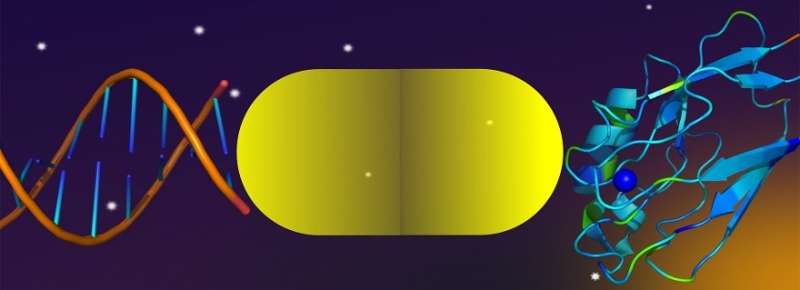Using gold particles to make the invisible visible

Gold nanoparticles give us a better understanding of enzymes and other molecules. Biswajit Pradhan, Ph.D. candidate at the Leiden Institute of Physics, uses gold nanorods to study individual molecules that would be challenging to detect otherwise. Resulting knowledge can be applied to many research fields, such as improving solar-cell efficiency and phototherapy of cancer.
Organisms thrive on dozens of biomolecular activities, with enzyme playing an important role. For instance, they help to degrade starch into smaller sugars. Other enzymes play important roles in breaking down proteins. In order to better understand these activities, scientists use different techniques to make the molecules involved visible. Fluorescence microscopy is one of the techniques commonly used for this.
The problem scientists sometimes face is that some molecules cannot be detected because they don't emit light. Therefore, Pradhan worked on a solution. "I attached single molecules to gold nanorods. The nanorods act as very small antennas by emitting light, enhancing the fluorescence of the attached molecule. This enables us to study single proteins or other complexes that are otherwise undetectable by fluorescence."
Pradhan used the gold nanorods to study enzymatic activity in azurin. This enzyme can be found in bacteria, playing a role in denitrification. In this process, bacteria produce nitrogen from nitrate. It is commonly accepted that the activity of the enzymes involved in this process remains invariable over small timescales. However, Pradhan discovered something else.
"We found that azurin shows lazy and busy periods in its activity in a matter of seconds. Like other enzymes, azurin converts substrate into product. During the busy periods, the enzyme frequently forms products while less frequently in lazy periods. Azurin changes its activity by altering its structural arrangement. Such flexibility in structure could be the reason for the formation of efficient enzymes during evolution."
Azurin transfers electrons between proteins. Therefore, it can be used as a sensor for measuring redox-potential in a living cell. Pradhan explains: "Energy transfer within living cells occurs via transfer of electrons from one biomolecule to another. For electricity at home, electrons flow from a high potential end to a low potential end. Similarly, in cells, electron transfer occurs from a protein to another protein in the cell with low potential. The redox potential is defined as the tendency of the surrounding of the protein to give or accept an electron."
Pradhan developed a method to observe a single azurin in action while electron transfer happens. "The rate at which it ejects and accepts electron gives a direct estimate of the surrounding potential. Though we did not make a sensor, I characterised the electron transfer properties of azurin in my thesis."
In another experiment, Pradhan used DNA as a tool to control the position of single molecules near the gold nanorod very precisely. "If the number of building blocks of a DNA strand on each strand is less than 50, then the double-stranded DNA will behave like a straight rod with no flexibility. Imagine a rope of a few inches long; you will always find it straight. If you increase the length of the rope it starts to bend and twist. This minimum length above which a rope or string starts to bend is called persistence length."
In his experiment, Pradhan permanently attached a short single-stranded DNA to the tip of a gold nanorod. Then he allowed complementary DNA strands to diffuse around it. "Each complementary strand contains the single molecule we want to investigate. Because of the weak binding of the short DNA strands, the binding time is short. Each complementary strand binds temporarily and is then replaced by a new complementary strand. This allowed us to study single molecules on the same nano-antenna. This technique can be applied to many research fields, such as improving solar-cell efficiency and phototherapy of cancer."
On 3 April 2018 Biswajit Pradhan will defend his thesis, "Fluorescence of Single Copper Proteins: Dynamic Disorder and Enhancement by a Gold Nanorod."
Provided by Leiden University



















